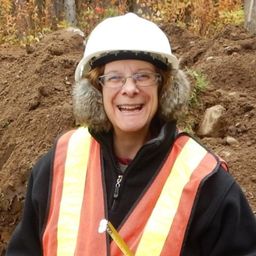Industry rediscovered: technical knowledge as critical to understanding industrial sites in Eastern Canada I
My Session Status
It is widely accepted that understanding a historic place is a critical first step to guide subsequent management and conservation. Industrial sites present a number of challenges as understanding their form, function, design, boundaries, and conservation often requires a high degree of technical expertise and experience. In Canada, gaining this expertise and information sharing is hampered by a limited number of institutions offering training in industrial archaeology and the lack of a national professional and avocational organization. Additionally, legislation to protect and conserve heritage properties is inconsistent across the provinces and territories, and land-use planning will sometimes fail to appreciate the scale of industrial sites or their capacity for adaptive re-use. To address these challenges, this session will bring together industrial archaeologists and heritage planners from across eastern Canada to reflect on the importance of resource-specific technical knowledge, as well as best practice approaches for conserving and interpreting industrial heritage.
This session was originally proposed by Henry Cary
Sub Sessions
In July 2020, the Brazilian mining corporation Vale Inc. began the work of demolishing the Superstack, once the world’s tallest smokestack and a landmark that loomed over the city of Sudbury, Ontario for almost five decades. Considered a feat of engineering at the time of its construction, the smokestack propelled the exhaust from the massive Copper Cliff Smelter into the upper atmosphere, improving the air quality for Sudbury residents while dispersing the pollutants to other parts of the wo...
La gare du Mile End était un arrêt de la banlieue de Montréal sur le réseau du Canadien Pacifique (CP). Lors de son ouverture en 1877, la gare se trouvait dans les champs à plus d’un kilomètre du noyau d’un village. Vingt ans plus tard, un quartier industriel prend racine autour de la gare, qui en devient le point central. Comme un clocher d’église, le profil haut de la gare en faisait un point de repère distinctif pendant des décennies. En 1931, le CP déménage l’arrêt pour les trains voyageu...
Née d’une approche anthropologique qui supporte une vision d’ensemble des composantes du paysage industriel qui va bien au-delà de l’enveloppe architecturale, l’archéologie contribue au décloisonnement du champ d’action du « patrimoine industriel ». S’inspirant de sites industriels à composantes archéologiques, la présentation mettra en lumière les assises de reconnaissance du patrimoine industriel dans la discipline de l’archéologie ainsi que la place des vestiges archéologiques dans la mise...





Discussion